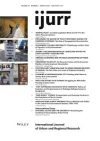This article analyses whether the physical desegregation of a residential neighbourhood ultimately facilitates the social integration of its residents. Desegregation is measured quantitatively (i.e. using census data for a suburb in which no single race comprises more than 50% and at least one other racial group comprises 25%), and social integration is assessed qualitatively using indicators such as friendship, common local identity, sharing local facilities and involvement in local institutions. Essentially this research is concerned with whether labelling a suburb ‘desegregated’ is a superficial term that whilst implying racial mixing actually masks social segregation; and also whether assumptions that urban policies of desegregation ultimately facilitate social integration are accurate. This desegregation/integration nexus is explored by examining the lives of residents of a desegregated Cape Town neighbourhood. South Africa provides a timely context because the legacy of apartheid’s spatial and social design continues to dominate the urban scene despite policy efforts to promote both desegregation and integration.
Details
Written by:
CHARLOTTE L. LEMANSKI
Digital Object Identifier (DOI)
10.1111/j.1468-2427.2006.00676.x
About DOI
Read full article as PDF
Read full article as HTML
See the references for this article
